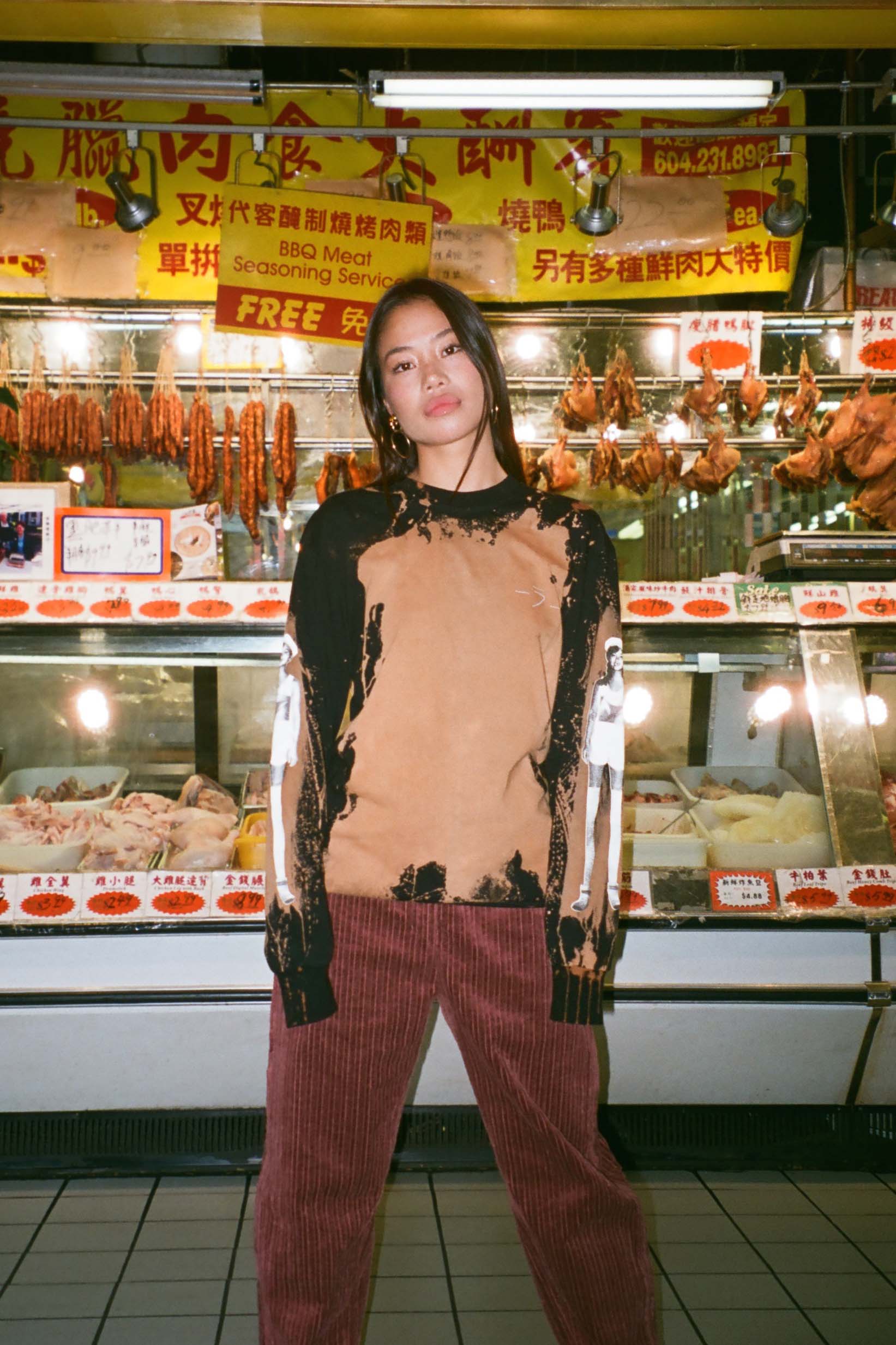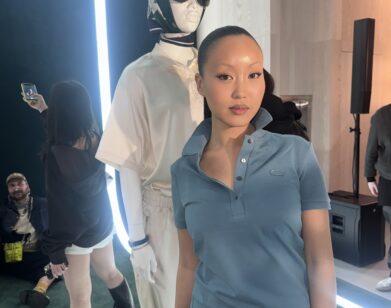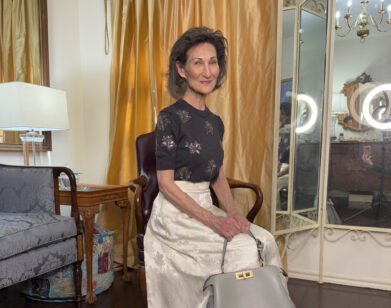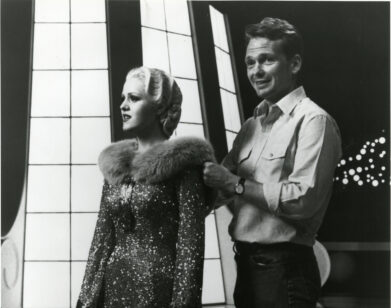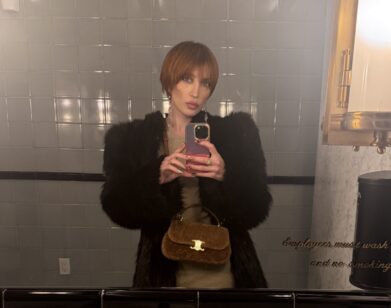Natto Franco is the woman-helmed brand disrupting the streetwear game
Only because people kept hounding did Noemie Sebayashi—the 27-year-old founder of Paris-based unisex streetwear label Natto Franco—finally submit to design.
Sebayashi, who originally wanted to study garden design, turned to fashion when her discreet online collection of abstract collages and images of Japanese youth culture started inviting curious attention from both friends and followers. Her Instagram page, which she initially called a “project,” quickly turned into a full-blown label early in 2013 after a number of inquiries from media outlets. Since then, the designer has done several collections.
Now more than ever, her Japanese inspired French label is turning heads as she carves a very specific niche in a market bulging with a number of both low and high-end streetwear brands. The competition is fierce but she is quick to draw a line between high-end streetwear and her own label, “I don’t resonate with high fashion streetwear,” she says over the phone. “It’s interesting for the culture though. It’s like art but I can’t imagine buying them. Those pieces are just nice to look at. It’s a category of streetwear for fashion week and ready-to-wear.”
Sebayashi’s views, much like her designs, are shaped by her intense obsession with Japanese illustrators and silkscreen artists such as Daisuke Ichiba. These inspirations are most palpable in her line of mesh shirts, corduroy caps, and hooded sweatshirts often laced with manic prints.
She is also keenly aware that curiosity is key in selling the brand. It’s why the she named it Natto Franco—an odd combo of words that signify a fermented soybean dish in Japan and France. She thinks it humorous and shocking. “It’s supposed to be a play on two words. But it’s so intriguing for Americans and Europeans. Even the Chinese are sometimes shocked by it,” she says, laughing.
For her latest creations that she specifically calls “drops”—explaining that she simply doesn’t create collections anymore—she draws inspiration from traditional sports uniforms in Japanese schools. “The two next drops include colors I’ve never done before. It’s mainly T-shirts made of stretched velvet. They are meant to resemble the T-shirts that young students wear in a P.E. class in Japan. It’s super cute,” she says.
HOMETOWN
Paris, France
GREEN THUMB BEGINNINGS
SEBAYASHI: Not a lot of people know this but I originally wanted to be a garden designer. I still talk about it. I love flowers and gardens. I always thought when I have a big house and lots of space, I could design my own garden with a river close by. And then one day my mom came up to me and said, “If you’re going to try to be a garden designer, you’re going to end up as a cashier at a garden store.” [laughs] That was the moment for me. I thought, if I’m going to design and it’s not plants, it’s going to be clothes. But it was really my father who got me interested in fashion. He used to work in advertising but he was always aware of what he was wearing. He bought and still buys stuff that may not be expensive but it’s the best thing you can find. He introduced me to thrift stores early on when vintage wasn’t a big thing in Paris. Around that time was also when he introduced me to the comfy, cozy, and cool Japanese menswear.
SILKSCREEN OBSESSIONS
SEBAYASHI: There’s this Japanese illustrator called Daisuke Ichiba. I’m basically obsessed with silkscreen artists. There’s a word for it in Japanese. It’s called “otaku.” It’s used for people who are obsessed with anime or rap. Everyone in Japan is “otaku” of something. These artists [that inspire me] are “otaku” of drawings and silkscreens. I’m also a very obsessive person. I like to explore everything about a subject. It could be a song, an artist, a place, or a thing. I still have these items of clothes with classic cuts from when I was a teenager. I looked back to when I was growing up and I realized what was going on aesthetically with the clothes. I’m very sensitive to when I was a teenager. It inspires me a lot as do books and collaging.
HUMOROUS AESTHETIC
SEBAYASHI: It’s a unisex brand, so I don’t say only girls or guys can wear a certain piece. My creative process also comes from the collages and color palettes I create. I think about what certain colors will look like when blended together. I don’t think about if girls will wear a print featuring another girl showing her boobs. Humor and how cool something looks is first for me. I also think streetwear is still a bit empty on the French scene. So for me there’s lots of room. People really think I do something unique here. But internationally, it’s important to not look at what everyone else is doing and just be true to yourself. That’s how you can have a unique identity.
COPYCATS ABOUND
SEBAYASHI: I’ve seen small brands with a lot of creativity getting ripped off by others. It’s sad but that makes me think about how I could be more unique, so someone can’t just pick something up and replicate it. Some of my logos like the rose symbols on my clothes are copied. It’s already being copied in purple and green. I won’t say I was the first person to come up with the rose. But when I did it, nobody was putting it on a sweatshirt. I came up with it at an emo phase in my life when I was listening to rock and punk. I thought something like that could be really symbolic of that period. I really started to play with it then. The next thing I know people had taken the print and the sleeves and everything was about that suddenly. But I try not to get too caught up with that. I mean, I can’t really do anything about it. The thing is it’s not even the same logo, it’s just the combination of colors and the shapes I’ve used. So I can’t be like, ‘It’s my idea, fuck you all.’ I just need to keep doing something else now, you know?
STANDING OUT
SEBAYASHI: Japan is like France, but in Asia. There’s a lot of heritage and artisans. Everything is traditional. It’s pretty heavy on culture. With streetwear, they’re kind of like maniacs. The standard for good quality there is too high. It’s untouchable sometimes. There’s a lot of pressure. The fact that there’s a sense of humor to my stuff that’s very French or European also makes it harder. My collages can seem very shocking or trash to some people in Japan. It makes it difficult but I try to have a specific artistic vision that moves a niche audience. They really understand the graphics and what I’m trying to do and communicate. That’s what keeps those people around.
ACCESSIBILITY VS. INDEPENDENCE
SEBAYASHI: Everyone around me was like, “I’d love to buy something from you but it’s so expensive!” So a few months ago, I decided to quit my showroom and be independent. Now if you want to buy Natto Franco, you can go on my website. The price is cheaper now because it’s just from the factory to the website and not from the factory to the buyers to their client. That’s my way of making my clothes accessible through the price. Besides, everyone is doing everything on their phone now.
HIGH FASHION VS. STREETWEAR
SEBAYASHI: It’s interesting to see a streetwear or skatewear brand like Supreme collaborate with a luxurious label like Louis Vuitton. It just means that skatewear is cool in fashion and represents the prevalence of the “I don’t give a fuck” attitude. But when that attitude blends with the high fashion scene, it transitions into “I don’t care but I do care.” [laughs]
FEMINISM AND DIVERSITY IN FASHION
SEBAYASHI: The fashion industry is so male dominated, even when the clothing is for women. I think even in terms of all the dialogue around sexual harassment, it’s too late. It’s like why are we talking about it when you can’t do anything about it? Nothing is happening. For most of the media, it’s just about creating a buzz. It’s just so plastic. It’s a shit show. I’m so angry about it. No one really wants to change things and it’s funny but the people who are talking about it on TV are mainly men, not women. How does that make sense? I mean everyone in the industry knew about Terry Richardson for so long but now it’s trendy to talk about it so the media is doing it. I mean, fuck that guy.
It’s quite the same with people of color in fashion. We talk so much about it but I don’t see anything really happening. Most girls are still white, skinny, and super tall. Where’s the diversity, really?
Take Karl Lagerfeld, for example, he does a show about feminism but casts maybe two black models as a token. He sees models as dolls and hangers. That’s not feminism. When I do casting for my own brand or for other clients, I always look for different people. I don’t care their skin color. I just see the charisma of their personality.
WHAT’S NEXT?
SEBAYASHI: I have my next drop in maybe 10 days. I’m nervous and excited about it. It’s mainly two-stretched velvet t-shirts inspired by what Japanese students wear to their P.E. class in school. I’m also collaborating with some stores in 2018. I’m working on a fanzine with this Italian store. I love photography and I like working with physical materials and prints, so I’m really excited about it! Of course I’ll keep dropping and selling my clothes. I’m just looking at next year right now.
FIND OUT MORE ABOUT NATTO FRANCO ON THEIR WEBSITE.

